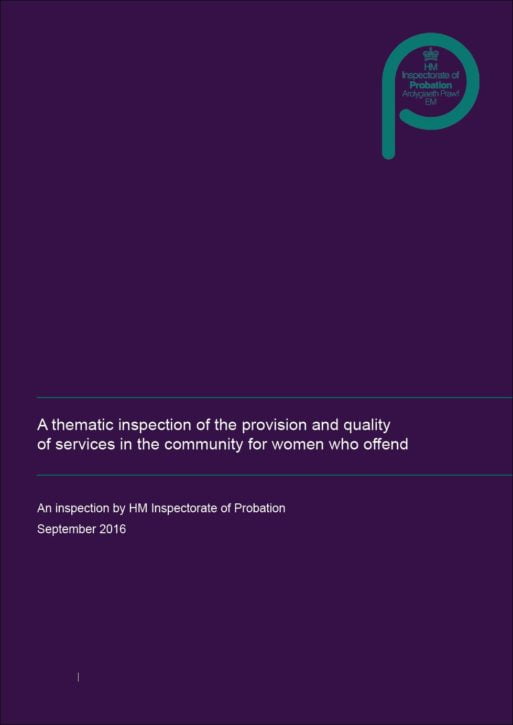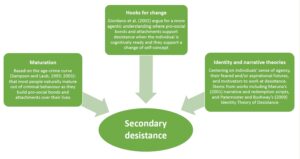Thematic inspection of probation with women offenders
Probation staff are doing some excellent work with women who commit crime, but their efforts are hampered by a lack of accommodation for women, doubts over the future of Women’s Centres, and a lack of funding. These women can sometimes turn their lives around, but they need the right support. With less funding available, and without a clear strategy for women, this is likely to get increasingly difficult and so leave more women more likely to re-offend.
That’s the conclusion of the Chief Inspector of Probation Dame Glenys Stacey to last week’s (29 September 2016) HM Inspectorate of Probation’s Thematic inspection of the provision and quality of services in the community for women who offend.
Key facts about women on probation
HMI Probation provides a number of key facts about women offenders in the introduction to the report:
- 14% of women are convicted of indictable offences compared to 86% of men.
- 10% of offenders being supervised by probation services are women.
- The average length of a community order for women is 12.4 months, compared to 15.1 months for men.
- 25% of women are placed on community orders for offences of theft and handling, compared to 13% of men.
- 73% of women successfully completed their community order, compared to 68% of men.
- 18% of women reoffend in the year starting from when their community order is made, compared to 26% of men.
- There are 3 gender specific contractual requirements for Community Rehabilitation Companies.
Women offenders differ from male offenders, in that they tend to offend for different reasons, commit less serious offences and reoffend less. They have more often experienced abuse, trauma, depression and substance misuse, and often respond to different approaches and interventions, when compared to men.
Findings
The inspection explored the quality and effectiveness of services for women after the implementation of the government’s Transforming Rehabilitation programme. It looked at work that had been commissioned, delivered or accessed by Community Rehabilitation Companies or the National Probation Service. Inspectors previously looked at services for women in 2011, four years after publication of the pivotal Corston report. Following a strong lead from the Ministry of Justice and National Offender Management Service (NOMS), a great deal was achieved between 2007 and 2011, although services were nevertheless inconsistent and performance measures scarce.
This more recent inspection found no better published performance measures and much less focus on women as a distinct group. There were excellent individual examples of work being done by probation staff and others, but the availability and range of provision in the community is still inconsistent.
The inspectors highlighted a number of key areas of concern:
- There was a lack of focus on outcomes for women offenders, both strategically and operationally.
- Less than one quarter of responsible officers had received training and guidance around female-specific case management.
- Sentencers lacked information about interventions specifically designed for women.
- The biggest gap in the availability of suitable interventions for women was in relation to accommodation (the recent focus of a Prison Reform Trust/Women in Prison report).
- Not all women were offered the opportunity to report in a female only environment, despite CRC contractual requirements to do so.
- Inspectors found relatively few examples of unpaid work being undertaken by women.
- In one third of cases inspectors found that the work to manage and minimise the vulnerability of women offenders had not been done sufficiently well.
Inspectors discovered that, in recent years, dedicated funding for women has virtually disappeared, and so the future of some services, and in particular those provided by Women’s Centres, was in doubt. The inspection found cases where Women’s Centres had been pivotal in turning women away from crime and helping them to rebuild their lives but reported that the continued existence of many of these Centres was in doubt.
Conclusion
As is the norm with the current Chief Inspector of Probation, Dame Glenys Stacey was very direct in her conclusion:
After the improvements we saw when we last inspected, in 2011, it is disappointing to see that progress has stalled. Women differ from men – they offend for different reasons, and they often need different sorts of support, to turn away from crime. Women’s centres were doing some excellent work to help women do that, and to rebuild their lives. These centres need recognition, support and funding so that they can continue to help these women and make communities safer.









